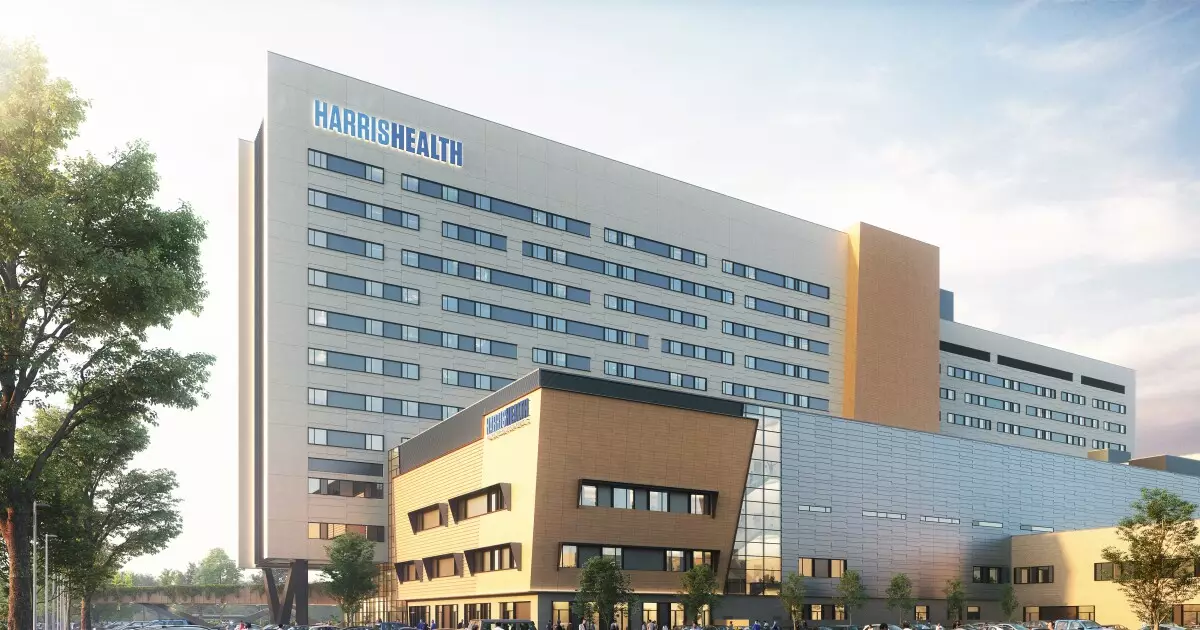In a significant financial maneuver, the Harris County Hospital District, the backbone of public healthcare for millions in Texas, is poised to issue $839.5 million in limited tax bonds this week. This is not merely a monetary transaction but a historic opportunity that taps into a massive $2.5 billion debt authorization approved by voters earlier in 2023 for an ambitious expansion project. This initiative, projected at $3.2 billion, aims to reshape the healthcare landscape in Harris County, which houses a staggering 5 million residents and is the third most populous county in the United States.
While some may view this as a prudent investment in community well-being, it also raises critical questions about fiscal responsibility and the reliance on debt to fund essential services. As residents, we must scrutinize whether leveraging such vast sums in public debt is a sustainable approach to meeting our healthcare needs.
Understanding Funding and Tax Implications
The financial intricacies behind this plan feature bonds led by Jefferies, which will be repaid through property taxes. The Texas constitutional cap sets the limit at $0.75 per $100 of assessed property value—a rate that allows the district ample breathing room considering a combined tax rate of $0.16348 for fiscal year 2025. However, the expected increase in the interest and sinking fund rate indicates mounting financial obligations ahead. This scenario ought to alert taxpayers to the reality that, although borrowing offers immediate capital, it may impose lasting repercussions on local economic health through increased taxation.
Moody’s has assigned an Aa1 rating for the bonds, citing robust taxing headroom. Yet, this “ample” capacity should not be misconstrued as an outright endorsement of the district’s fiscal prudence; instead, it underscores a stark truth—Harris County’s reliance on property taxes to fund healthcare is precarious. With 73% of cash collections derived from Medicaid and Medicare, the underlying risk only amplifies in a state historically resistant to expansive Medicaid policies. Future federal funding cuts loom ominously overhead, setting the stage for potential crises in service availability.
Winners, Losers, and the Role of Accountability
Proposition A’s passage, garnering a commanding 72.3% of the vote, might suggest overwhelming public support for these bonds. However, it also reflects an environment where voters could be inadequately informed about what such spending means practically. This monumental decision is accompanied by a moral obligation for transparency and accountability in how these funds will be employed. The Harris Health district must be vigilant in ensuring its expenditures translate into real healthcare improvements rather than evaporating into bureaucratic inefficiency.
The board, led by Dr. Andrea Caracostis, heralds this as a historic moment, branding it a once-in-a-lifetime opportunity to elevate the health outcomes in our community. But the enthusiasm surrounding the project must be tethered to responsibility. The cash flow, already under scrutiny with dwindling days in reserve—from 231 days in fiscal 2024 down from 168—highlights the fragility of the system. Scrutiny will only intensify as watchdogs and concerned residents demand concrete metrics on the project’s performance.
Climate Challenges and Future Resilience
Beyond fiscal responsibility, one must consider the broader implications of climate change on Harris Health’s future. Situated near the Gulf Coast, the district is inherently vulnerable to climate-related disasters, which could severely disrupt operations. While the district emphasizes its commitment to infrastructure resilience and sustainable practices, the questions remain—are these measures sufficient, and do they come at the cost of immediate healthcare access?
Prudent fiscal management in healthcare is more necessary now than ever, especially as Harris County anticipates adding 1.5 million residents by the year 2050. The projected increase in uninsured residents underscores the inadequacies of current healthcare offerings, prompting urgent attention to how this capital will be utilized and whether it genuinely bolsters the safety net for vulnerable populations.
This impending healthcare transformation stands as a reminder that progress must not only be measured in dollar signs but in the tangible benefits it brings to those who rely on it most. As a community, we must question whether we can commit to oversight and proactive engagement to uphold the promise of better health outcomes amidst systemic shifts.


Leave a Reply